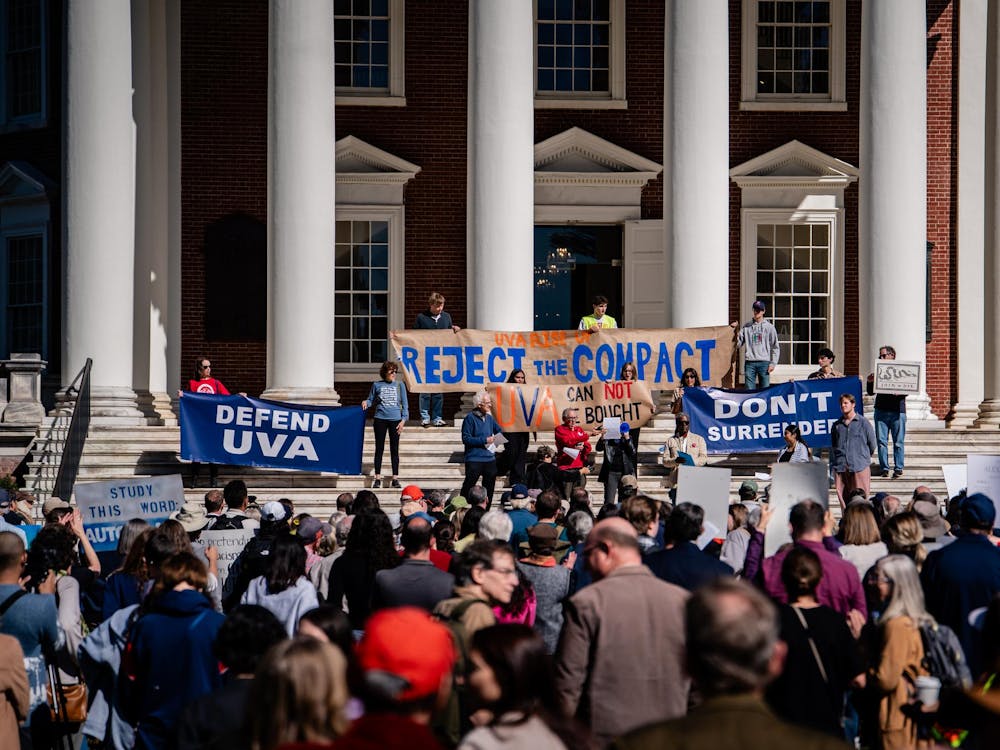NATIONALLY, Katrina's winds have, without a doubt, blown the stubborn blanket off of race relations, exposing the lingering racism in America.
Locally, the racist incidents at our University have also without a doubt stripped the same blanket off of local race relations, exposing the racism in Charlottesville. However, people too often assume that the exposure of race relations instantaneously and naturally leads to the elimination of racial tensions and problems. Unfortunately, it is this fallacious reasoning, used both by national politicians and our University's administration, that helps perpetuate the absurdly popular notion that racism is a dying shadow among us.
When Katrina hit Louisiana, so did the media. Coverage of those too poor to escape Katrina's wrath was on the air non-stop and it was shamefully difficult not to notice that most of these poor people were black. Perhaps by bringing cameras where they haven't been before, Katrina's clouds brought with them a silver lining: exposing race relations in America. Thus far, the response of most Americans, whether conservative or liberal, has been similar to that of Rep. Jesse Jackson, Jr., D-Ill.: Get them food, get them water, get them homes.
The University's Board of Visitors met last Friday to discuss the recent racial incidents, a discussion that culminated with an address from President John T. Casteen, III to the students. The speech called for a "quiet, dignified" response to the recent (and past) racial problems. Board Diversity Committee Chair Warren Thompson suggested that students wear black ribbons this week up until the football game on Saturday so that the nation could see that our University is united against racism. The response of our nation to Katrina and of the administration to local race problems have used a similar, flawed paradigm. They assume racism was defeated long ago and that its contemporary state is merely that of a shadow lurking among our society's buildings, waiting and striking with guerrilla tactics.
This paradigm, mainly the assumption of racism as a shadow, has consistently produced the same response: gathering the community and shining a flashlight on the shadow. However, this approach is as circular as it is flawed, for as soon as the flashlights are turned on, the shadow disappears, leaving society with little but the reaffirmation that a strong majority of its citizens are not racist (whether it's because they donate food or wear black ribbons).
In turn, as we walk around merrily with our flashlights, we are all lulled back into the tenacious misconception that shadows don't exist anymore.Katrina isn't the first media-covered incident that exposed racial issues in America. Remember Rodney King? This semester isn't the first semester that our University has faced racial problems. Remember Daisy Lundy? The problems have been viciously yet surreptitiously present in the past few decades, yet our paradigm has remained.
It is time to change our paradigm from one that regards racism as a shadow to one that acknowledges racism as a social omnipresence: Racism is not only lurking among our buildings, but living within them.
We must understand that today's racism is not a shadow that dies at the flick of a flashlight, but an ubiquity that depends on the false sense of security provided by the flashlight itself. Thus the solutions presented by well-intended individuals such as Thompson and Casteen aredefinitive steps in the right direction, but they have not been or ever will be the real solution. Only when we recognize racism as such a powerful, if tacit, agent within our society can we address the problem in more significant ways than diversity training and black ribbons.
What are these solutions? As far as racial issues nationwide, one often-made suggestion without a political voice is that local and national governments should work to completely revamp social structures such as education. This in turn would begin to provide poor people with the same privileges that the rich naturally get, such as a better learning environment. As far as racial issues here in Charlottesville, the University administration should be just as dogged about promoting diversity and brotherhood among our community six months from now, even if no more racial incidents occur between now and then. We must not merely respond to racial incidents, but address the deep-seeded nature of racism that allows those incidents to continue over 40 years after the Civil Rights Act of 1964.
Only when we drop our flashlights and give up the search for shadows can our society realize that the problem is all around us and do what will admittedly be a hard task: Fixing everything around us.
Sina Kian's column appears Thursdays in The Cavalier Daily. He can be reached at skian@cavalierdaily.com.






